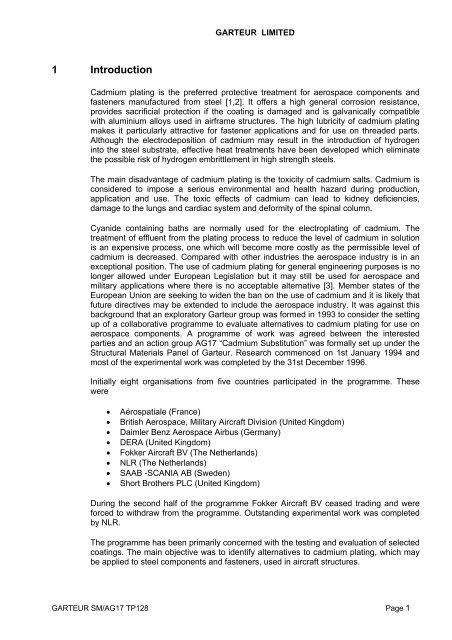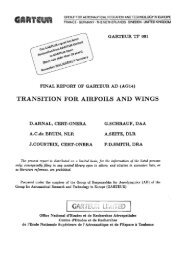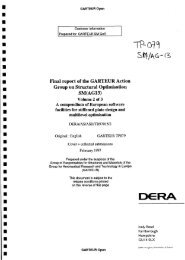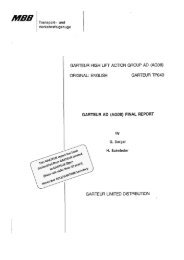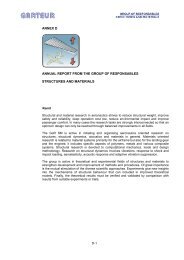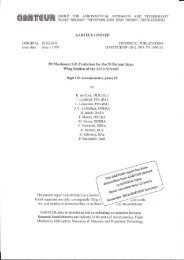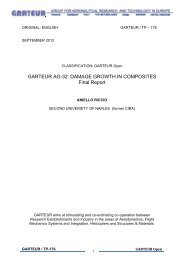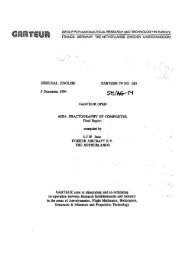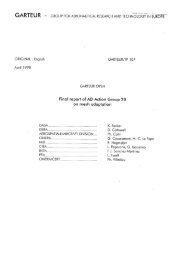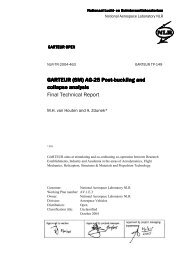Cadmium Substitution - garteur
Cadmium Substitution - garteur
Cadmium Substitution - garteur
Create successful ePaper yourself
Turn your PDF publications into a flip-book with our unique Google optimized e-Paper software.
GARTEUR LIMITED<br />
1 Introduction<br />
<strong>Cadmium</strong> plating is the preferred protective treatment for aerospace components and<br />
fasteners manufactured from steel [1,2]. It offers a high general corrosion resistance,<br />
provides sacrificial protection if the coating is damaged and is galvanically compatible<br />
with aluminium alloys used in airframe structures. The high lubricity of cadmium plating<br />
makes it particularly attractive for fastener applications and for use on threaded parts.<br />
Although the electrodeposition of cadmium may result in the introduction of hydrogen<br />
into the steel substrate, effective heat treatments have been developed which eliminate<br />
the possible risk of hydrogen embrittlement in high strength steels.<br />
The main disadvantage of cadmium plating is the toxicity of cadmium salts. <strong>Cadmium</strong> is<br />
considered to impose a serious environmental and health hazard during production,<br />
application and use. The toxic effects of cadmium can lead to kidney deficiencies,<br />
damage to the lungs and cardiac system and deformity of the spinal column.<br />
Cyanide containing baths are normally used for the electroplating of cadmium. The<br />
treatment of effluent from the plating process to reduce the level of cadmium in solution<br />
is an expensive process, one which will become more costly as the permissible level of<br />
cadmium is decreased. Compared with other industries the aerospace industry is in an<br />
exceptional position. The use of cadmium plating for general engineering purposes is no<br />
longer allowed under European Legislation but it may still be used for aerospace and<br />
military applications where there is no acceptable alternative [3]. Member states of the<br />
European Union are seeking to widen the ban on the use of cadmium and it is likely that<br />
future directives may be extended to include the aerospace industry. It was against this<br />
background that an exploratory Garteur group was formed in 1993 to consider the setting<br />
up of a collaborative programme to evaluate alternatives to cadmium plating for use on<br />
aerospace components. A programme of work was agreed between the interested<br />
parties and an action group AG17 “<strong>Cadmium</strong> <strong>Substitution</strong>” was formally set up under the<br />
Structural Materials Panel of Garteur. Research commenced on 1st January 1994 and<br />
most of the experimental work was completed by the 31st December 1996.<br />
Initially eight organisations from five countries participated in the programme. These<br />
were<br />
• Aérospatiale (France)<br />
• British Aerospace, Military Aircraft Division (United Kingdom)<br />
• Daimler Benz Aerospace Airbus (Germany)<br />
• DERA (United Kingdom)<br />
• Fokker Aircraft BV (The Netherlands)<br />
• NLR (The Netherlands)<br />
• SAAB -SCANIA AB (Sweden)<br />
• Short Brothers PLC (United Kingdom)<br />
During the second half of the programme Fokker Aircraft BV ceased trading and were<br />
forced to withdraw from the programme. Outstanding experimental work was completed<br />
by NLR.<br />
The programme has been primarily concerned with the testing and evaluation of selected<br />
coatings. The main objective was to identify alternatives to cadmium plating, which may<br />
be applied to steel components and fasteners, used in aircraft structures.<br />
GARTEUR SM/AG17 TP128 Page 1


